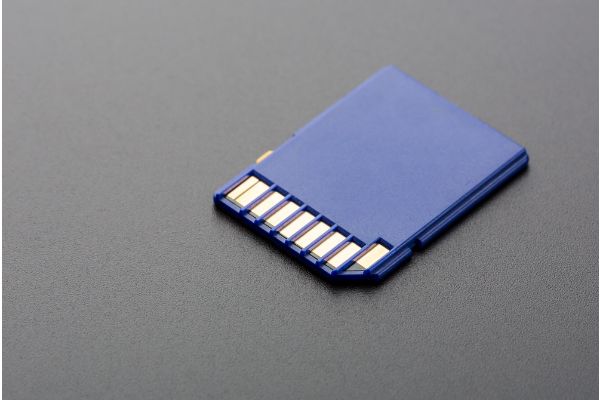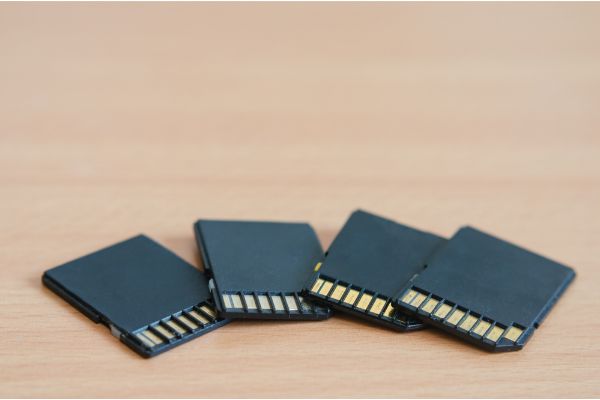Disclaimer: This post may contain affiliate links, meaning we get a small commission if you make a purchase through our links, at no cost to you. For more information, please visit our Disclaimer Page.
The 3DS is Nintendo’s answer to the problem of wanting to enjoy interesting, 3D graphics in a portable gaming system with limited space for powerful hardware. Thanks to a stereoscopic display, the handheld console can render vibrant, realistic graphics that might be preferable to the ones displayed on some other portable devices out there.
Furthermore, the 3DS has a screen on the top part of the case that opens when you flip it up, but it features a second screen on the bottom part that houses the buttons and control pad as well. This gives the device even more ways to be flexible with graphics than you might find in some other small systems.
The 3DS comes with an SD card for storage and memory purposes, but there are some users who wonder if you can still use it without such a card. We’ll go over how the card helps the 3DS, whether you can use it without one, and other common questions related to the gaming system’s memory.
Table of Contents
Can You Use a 3DS Without an SD Card?
Sometimes, you might be able to use the 3DS when it does not have the SD memory card inserted into it. However, there are also cases where you might need the SD card in order to play a game.
Therefore, it depends on what you’re doing with the 3DS system, and it can hinge on what specific game you would like to play. There may not be a set list of games that need the SD card in order to allow you to play, but many of them that will use one or more of the extra kinds of data above may require the card to be in place.
In other cases, you may be able to play some games and make save files that go on the cartridge, but some updates or new features that you would otherwise have on the SD card may be unavailable to you.
The other exception we will mention here is regular Nintendo DS games. The original DS has very limited internal storage. What it does have is reserved for storing profile information and things about the DS operating system, and it would not be used for things like save files or downloads.
Because of this, all native DS games saved progress or game-related things to the cartridges themselves. This is in contrast to 3DS games, which may save certain data in different spots, and most of them should give you the option of where you would like to send the save data for a particular game.
Therefore, you can also play regular DS games without the need for an SD card.
Why Do I Need an SD Card for a Nintendo 3DS?
There are certain extra features or data that the 3DS sometimes needs to store. In such cases, the device wants to put these things on the SD card rather than some kind of internal memory or the cartridge itself. Therefore, there are tasks for which you need to have an SD card present in the 3DS.
While many games save data to the memory of the 3DS itself, there are also games that need to store extra data on the SD card. Extra data might include information for the Streetpass communication system that the 3DS uses, game updates, downloadable extra content, and more.
If you would like to store MP3 files or photos, both of which the 3DS can do, you would also need to put those things on the SD card, as they are not native to cartridges the way that save files are.
You also need to have an SD card present if you want to purchase and download digital content from the store. Physical cartridges have space to save some game data, but digital copies need somewhere else to put this information and keep your progress current.
This is where the SD card comes in, even if the physical copy of the same game might otherwise let you write data directly to the cartridge. On a related note, you may need an SD card even if you are running a physical copy of a particular game.
As we touched on previously, some games need to write extra data to the SD card rather than the cartridge itself, and they may require you to insert such a card before allowing you to play.
Where Does 3DS Store Save Data?
If we’re talking about save data just in terms of game progress, the 3DS usually writes that information to the game cartridge itself.
Therefore, many games that are in the 3DS library are fully playable without an SD card. You’ll still lose access to some digital features or things from the store, but you can enjoy games this way without the use of a card.
It provides you with a convenient setup that still gives you the full experience the game developers intended, with the ability to track your progress, save files, and enjoy the story and writing of a game without needing to add an SD card.
Writing game progress data to the cartridge is the usual way to make a save for 3DS games, but you have the option to save game data to the SD card if one is present.
In most cases, the 3DS should ask you where you want to save your data to, particularly if you’re making a save for a game for the first time. This gives you an extra way to save your progress route or create a backup that you might want to move later.
Keep in mind that, again, some games want to put extra data that cannot go on the cartridge on an SD card.
Does the 3DS Have Internal Memory?
Yes, the Nintendo 3DS does have internal memory. It is a third way that the console saves data, although this information is not necessarily related to game progress routes.
Mostly, the internal memory within the 3DS is something that the device will use for its own operating system and related applications that help it run games.
Therefore, most of this flash memory space will already be taken up by the system itself once you boot it up, set everything up, and get started playing your new 3DS.
It is possible that the OS and related things do not take up the entirety of the internal memory on the 3DS. In such cases, you may be able to make use of the remaining memory that is free.
However, it is not something you would use for things like save files or game downloads. Instead, this part of the memory might be something you can use to store secondary applications, photos, or related content.
Can You Use Multiple SD Cards in a 3DS?
Yes, it is possible to use multiple SD cards on a 3DS. However, there are a few things to keep in mind here, and they are crucial to making sure that your device can read games.
Each 3DS console is associated with a specific Nintendo Network ID, otherwise known as an NNID. When you set up your 3DS, your NNID associates all of your save files and game data with this profile. It is your personal identifier that grants you access to many of the company’s services.
Nintendo does not recommend that users of one 3DS console try to use several SD cards with it. The company says that it is best to tie one SD card to each console, and this is how they have developed the 3DS to function. Part of the issue here is that using more than one SD card at a time can result in copied games or data on both cards, and both of them would be associated with your Nintendo ID tag.
In these cases, it may cause some strange issues that don’t allow the game to run on a particular card. Further, it can cause some of the save game data that you might have overwritten to be completely invalidated with no way to recover your game progress. This is a big part of why Nintendo doesn’t recommend using multiple cards on one console.
Can You Switch Between SD Cards on a 3DS?
Unlike using multiple cards at once, you can switch between SD cards on a 3DS. This is useful if you want to upgrade the overall storage capacity of your card, or if you think there might be a problem with how your old card writes data.
Switching between cards puts all the data on the new card, and that data is then associated with your NNID, lessening the chances of any kind of compatibility or corruption issues.
Doing this involves an entire system transfer of the data between one SD card and another. To do this, the easiest way is to have access to a desktop computer that accepts an SD card.
- You can insert the card into the appropriate slot. Once the computer reads it, open the file location to find your 3DS data.
- Next, drag the entirety of your 3DS files from the card to the desktop computer’s storage. This means selecting and dragging all the folders, not going into individual folders and selecting data.
- Once the data is moved, eject the first card and insert the new one.
- Select and move the 3DS data from the desktop to the new card.
- Make sure that the new card is formatted properly before doing this procedure.
Conclusion
The 3DS is a fun console to use when you want to take your love of gaming with you. It has multiple ways to store data, but some of those ways are restricted to particular types of files. In other cases, they may be reserved for the console’s operating system itself.
However, there are ways to save game progress without SD cards, and other data you can store as long as you have an SD card present in the 3DS.
If you’re planning to move data over, make sure you do it in full using a new SD card that will be associated with your Nintendo ID.


